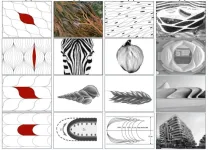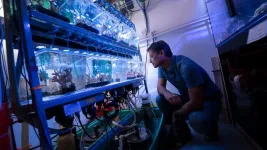“Rurality creates unique challenges in delivering high quality cardiovascular care and eliminating health inequities. The ACC Board of Trustees Health Equity Task Force Action Plan outlines implementation strategies that address these challenges,” said Paul L. Douglass, MD, MACC, chair of the ACC Health Equity Task Force. “By leveraging the strengths of the ACC that include closing data gaps, confronting social determinants of health, creating health information exchanges, technology utilization, artificial intelligence and emerging innovations, rural communities are provided with the necessary framework and resources required to decrease and eliminate health disparities.”
Summaries of embargoed abstracts are below. For access to the full abstracts or to register for media access to the conference, contact Katie Glenn at kglenn@acc.org.
Expediting Access to Critical Care Vital for Life-Threatening Cardiac Emergencies in Rural Areas
Patients presenting at the emergency department with a heart attack—or ST-Elevation myocardial infarction (STEMI)—should undergo critical stenting in less than 90 minutes to reduce heart muscle damage and improve outcomes; however, many critical access hospitals in rural areas do not have cardiac interventional services and patients must be transported. PeaceHealth Sacred Heart Medical Center RiverBend in Springfield, Oregon, modified the transfer process to ensure simultaneous STEMI team activation and early LifeFlight Network Air Medical Transport activation that allowed for an 11-minute flight versus a 30-minute drive. To achieve the goal of reducing door-to-door-balloon, the hospital implemented clinical education for emergency department staff, as well as on-going education of case details and outcomes for feedback. Over the course of 18 months transportation to another hospital was reduced by 18.2 minutes on average and door-to-door-to-balloon (the time to arrive at the hospital, be transported and begin interventional cardiac care) was reduced by 33.8 minutes. According to the researchers, rapid heart attack identification and early activation of critical care air transport allows critical access hospitals to better process patients experiencing major cardiac events, improves access to higher levels of emergency cardiac care for rural community members and reduces comorbidities associated with delays in heart attack care.
Critical Access Hospital, Referring Facility Collaborate to Reduce Time to STEMI Care
At Intermountain Health St. Mary’s Regional Hospital in Grand Junction, Colorado, 45% of STEMI patients were transferred from outside facilities within a 250-mile radius with 39% coming from one referring hospital. That hospital had limited support and resources and demonstrated significant delays in door-to-thrombolytic administration times for STEMI patients, resulting in delayed patient care and increased risk of cardiovascular comorbidities and/or death. The two facilities collaborated to examine, then rework and streamline the transfer process. The average time for thrombolytics started at 79.5 minutes and six months after implementing the new transfer protocol their average decreased to 66.5 minutes, with the next six months averaging 46 minutes. Current 2024 data shows a 29-minute average at the facility. St. Mary’s has now delivered the updated transfer protocol to all referring facilities to remove the barriers and challenges that rural health care patients and clinicians experience.
Rural Hospital Systems Using Remote Cardiac Rehab Increase Participation, Completion of Program
Cardiac rehabilitation is vital for recovery from heart attack and other cardiac events, yet only 28.6% of Medicare patients participate when referred for services. Geisinger Health System, a regional health provider throughout rural Pennsylvania, explored remote cardiac rehabilitation to increase overall participation and completion rates. The remote cardiac rehab program has three elements: 1) a multidisciplinary care team; 2) a personalized recovery kit mailed to patients including stretching bands, monitoring equipment, resistance bands and an internet-enabled tablet, if the patient needed a device; and 3) an individualized treatment plan after a comprehensive evaluation of the patient’s needs and goals. Since June 2021 Geisinger has increased their cardiac rehab capacity by four times of their traditional program, improved outcomes, and decreased readmissions and emergency department visits. Remote cardiac rehab patients have completed 40% more sessions than traditional center-based rehab patients.
Leveraging Technology in Vast Rural Areas Improves Timely Communication and Emergent Cardiac Care
Guidelines from the ACC/American Heart Association recommend using emergency medical services (EMS) electrocardiogram (EKG) interpretation for pre-hospital STEMI activation to decrease door-to-balloon time for heart attack patients. Mat-Su Regional Medical Center (MSRMC) in Palmer, Alaska, has approximately 70% of their STEMI alerts occur outside of business hours; serves a vast geographic area; and faces staffing, geographic, weather and communications challenges due to its rural location that delay pre-arrival STEMI activations from first medical contact to balloon times. In May 2020 MSRMC implemented Pulsara, a mobile telehealth communications app, to connect the STEMI team and EMS in place of radio reports to communicate all EMS arrivals. Between 2019 and 2023, MSRMC showed a 37% reduction in time—about 10 minutes—from the time EMS obtains a STEMI positive EKG to the time the MSRMC Cath Lab and Cardiology Team is activated. Leveraging technology created clearer communications, streamlining processes improving clinician satisfaction and reducing staff turnover.
ACC’s Health Equity Strategy
The ACC aims to achieve a culture of equitable cardiovascular care and heart health for all. ACC’s health equity strategy uses advocacy, education and science to acknowledge social determinants of health and eliminate disparities. A recent study published in JACC found 86.2% of rural U.S. counties had no cardiologists. The ACC recently announced the Rural Cardiovascular Health Initiative (RHCI), a collaboration between the ACC and the JF Maddox Foundation, to improve cardiovascular outcomes in rural communities of New Mexico. The RHCI is part of the ACC’s broader efforts to address health disparities and ensure equitable health care services for all communities. Key components of addressing health disparities includes education opportunities, such as a recent webinar on Enhancing Cardiovascular Health in Rural Communities.
“Cardiovascular research in rural communities is creating a framework for strategic implementation of telemedicine, innovation, advocacy, education, and remote monitoring, that informs a way forward. The American College of Cardiology is committed to achieving health equity and providing high quality cardiovascular care for all,” Douglass said.
The American College of Cardiology (ACC) is the global leader in transforming cardiovascular care and improving heart health for all. As the preeminent source of professional medical education for the entire cardiovascular care team since 1949, ACC credentials cardiovascular professionals in over 140 countries who meet stringent qualifications and leads in the formation of health policy, standards and guidelines. Through its world-renowned family of JACC Journals, NCDR registries, ACC Accreditation Services, global network of Member Sections, CardioSmart patient resources and more, the College is committed to ensuring a world where science, knowledge and innovation optimize patient care and outcomes. Learn more at www.ACC.org or follow @ACCinTouch.
###
END





